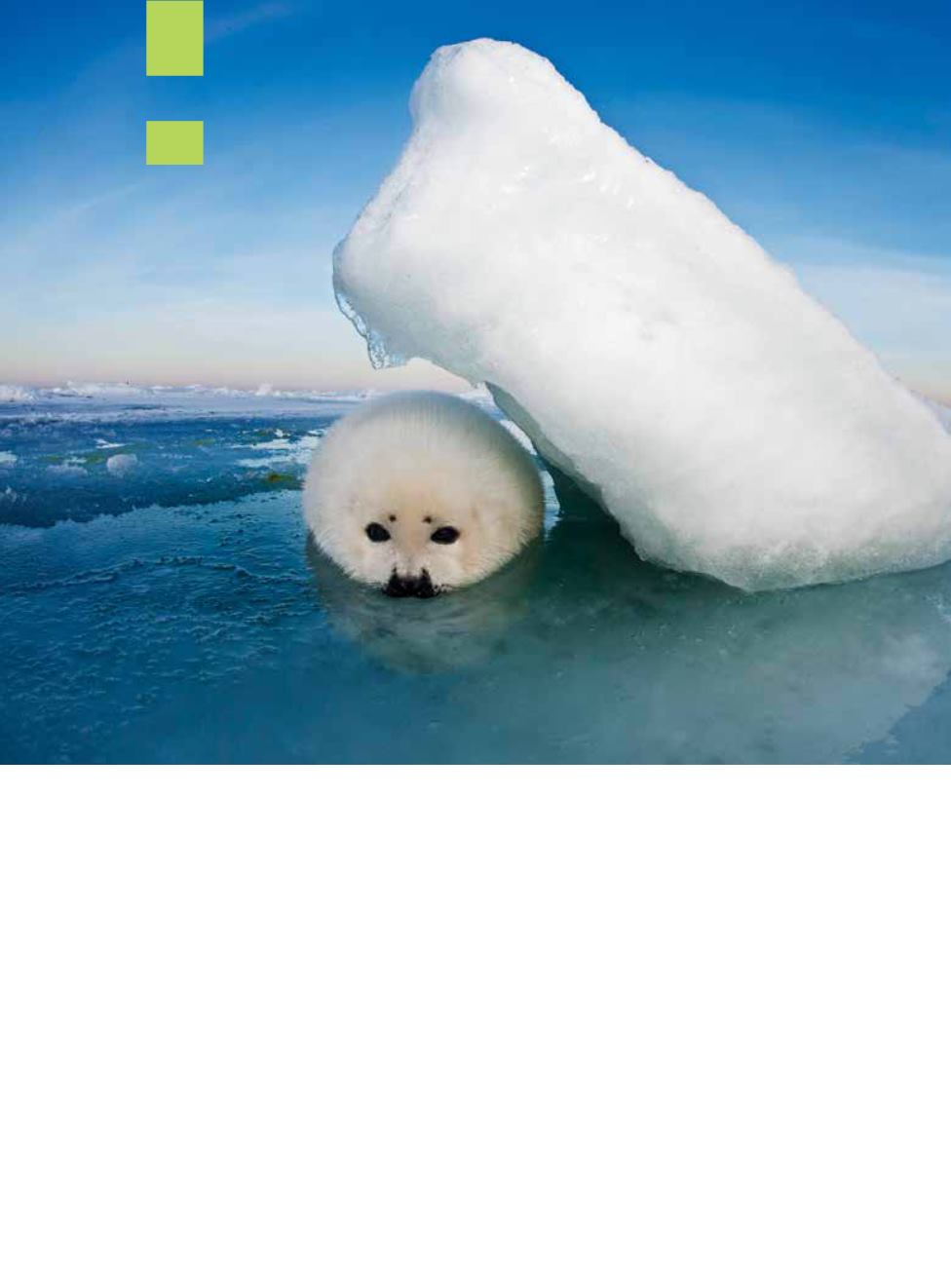
D
avid and I live in the Thousand Islands
region of the St. Lawrence River — not
by accident or because I grew up near
here but rather by design and desire.
The St. Lawrence Seaway, a boulevard
for international shipping, is literally our backyard.
The low rumble of ships and soul-soothing songs of
loons waft through our house and office.
We recently had an incredible opportunity to explore
the length of the St. Lawrence, from our dock near Lake
Ontario to the distant shores of Newfoundland and
Labrador, for a National Geographic magazine article
published in May 2014. The proposed development of
a significant petroleum discovery known as “Old Harry”
in the Gulf of St. Lawrence provided the incentive to
explore and share what is at risk in the surrounding
waters. With the help of our colleagues Michel Gilbert
and Danielle Alary, we began planning our expedition.
Our dock is only minutes away from shipwrecks,
storybook castles and sturgeon. In late May, when
the river temperature touches 50°F, lake sturgeon
gather to spawn on nearby gravel beds. A 3- to 5-knot
current roars across their spawning areas, aerating their
precious carpet of eggs. Diving here with this ancient,
threatened species is like swimming against a fire
hose. These magnificent fish can live 100 years and are
programmed for slow reproduction: Females first spawn
at 25 years and males at 14-16 years. Against a backdrop
of diminishing habitat and unsustainable harvest for
caviar, this is leading to crises in sturgeon populations
worldwide.
The river widens into one of the world’s deepest,
richest estuaries as it approaches the Laurentian Trench
at Tadoussac, Quebec. The upwelling of 38°F, nutrient-
filled water supports the 13 species of whale that inhabit
the St. Lawrence system, many of them found within
T E X T B Y J E N N I F E R H A Y E S
P H O T O S B Y D A V I D D O U B I L E T A N D J E N N I F E R H A Y E S
LOCAL DIVING
THE ST. LAWRENCE RIVER
34
|
FALL 2014


